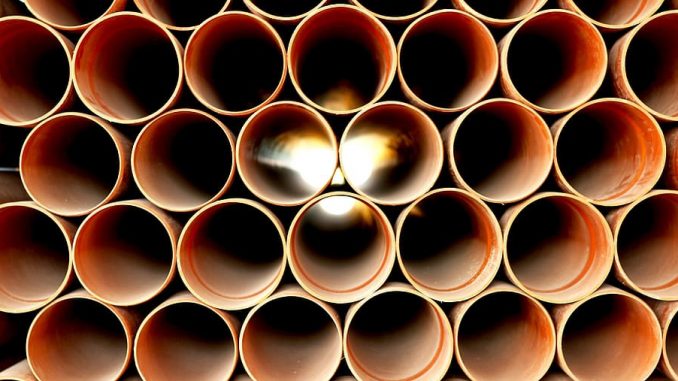
Selecting the right type of water pipes for your home can often seem like a minefield. Where do you begin when there are so many options available?
Many materials exist and they all come with their own attributes, ranging from the high temperature resistance that is a necessity for carrying hot water to properties that mean they will not corrode and contaminate drinking water.
To try and help you select the best type of water pipe for the job at hand in your home, we have looked at four of the most common materials, weighed up their pros and cons and given some advice for where they are most suitable.
Copper pipes in the home
Copper is the one of the most popular types of material for pipes within the home. It is not hard to see why when you look through its properties, many of which make copper pipework perfect for carrying water in domestic settings.
It is lightweight, resilient and can be used with both cold and hot water, with that temperature resistance giving it an advantage over plastic. Copper is the most flexible pipe material available, making it easy to install and allowing it to fit into tight places behind walls and within cupboards.
Copper resists contamination and is resistant to most forms of corrosion. We say most forms, because if your water supply has an acidic tinge with a pH value of under 6.5, then copper pipes can corrode.
When this happens, your pipework will weaken and become more susceptible to cracks, holes and leaks. Corrosion can also cause copper to bleed into your water, which may cause health problems if the water in question is then drunk.
As a result, some experts advise not to use copper on pipelines which will supply drinking water. A more practical solution though is to test the acidity level of your water supply. If it is alkaline based, then corrosion should not be a problem.
If there is a tinge of acid in your water, then you can consult a plumber or pipework expert about the potential risks associated with copper pipework and drinking water if necessary.
Plastic pipes in the home
Plastic pipes come in many forms – PVC, CPVC and PEX – and they are widely used to transport water and wastewater around the home. Plastic is tough, light, chemically resistant and does not rust.
Pipes made from plastic require fewer joints, meaning that they pose less of a leak risk via weakened or incorrectly fitted connections. Generally, you will find plastic in bathrooms, kitchens and as part of exterior pipework.
It is a particularly popular material outdoors as it does not freeze, reducing the risks and problems that freezing pipes can bring when winter arrives. Plastic is versatile too, meaning that it can be bent and pushed into shape.
One major negative about plastic is the damage that it causes to the environment. Once plastic pipes reach the end of their lifeline – and they do not last as long nor are they as easy to pipe repair as copper – they will not decompose when disposed of.
Plastic pipes cannot be used in high temperature applications either. Running hot water can cause the material to weaken and break, restricting where PVC, CPVC and PEX pipes can be used.
Galvanised metal pipes in the home
Up until the 1970s, virtually all homes in the United Kingdom were constructed with and supplied by lead pipes. Over time, research began to suggest that exposure to lead could prove hazardous to human health with the government introducing a ban on lead water supply pipes in 1970.
Galvanised metal was one of the materials which took over from lead pipes. Although a popular choice back then, galvanised metal has since been overtaken by copper and plastic pipes, both of which offer more flexibility and greater longevity than metal.
The main problem faced by metal pipework is that the protective layer is often a coating of zinc. After time, zinc will begin to wear away and when that happens, the metal pipework can start to weaken, corrode and break, leading to leaking pipes.
If corrosion does occur, then it might cause metal to contaminate the water supply. Just as with corroding copper pipes, this can pose a health risk. One way to prevent corrosion of metal pipes is to wrap them in corrosion protection wrap.
These specialist pipe repair bandages are infused with corrosion inhibitors to protect and strengthen metalwork and structures. In testing, metalwork which has been wrapped in corrosion protection bandage has returned corrosion free after being subjected to 1,000 hours of saltwater exposure.
Steel pipes
One metal that is resilient to corrosion is steel, which makes it a popular choice for pipes which are installed by builders during the construction process. Stainless steel is an extremely functional material which will not corrode or contaminate drinking water. It is also super-strong, making it the most hard-wearing pipe material available.
Steel pipes are rarely seen in the interior of homes, certainly in the same way that copper is often left on display because of its aesthetic qualities or plastic can be found tucked away in a kitchen cupboard.
But steel’s resilience and its hygienic properties make it an ideal pipe material for carrying water – including drinking water – both inside and outside homes.

Leave a Reply